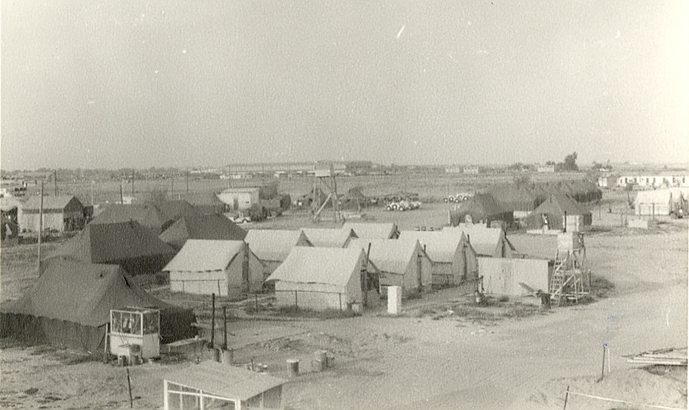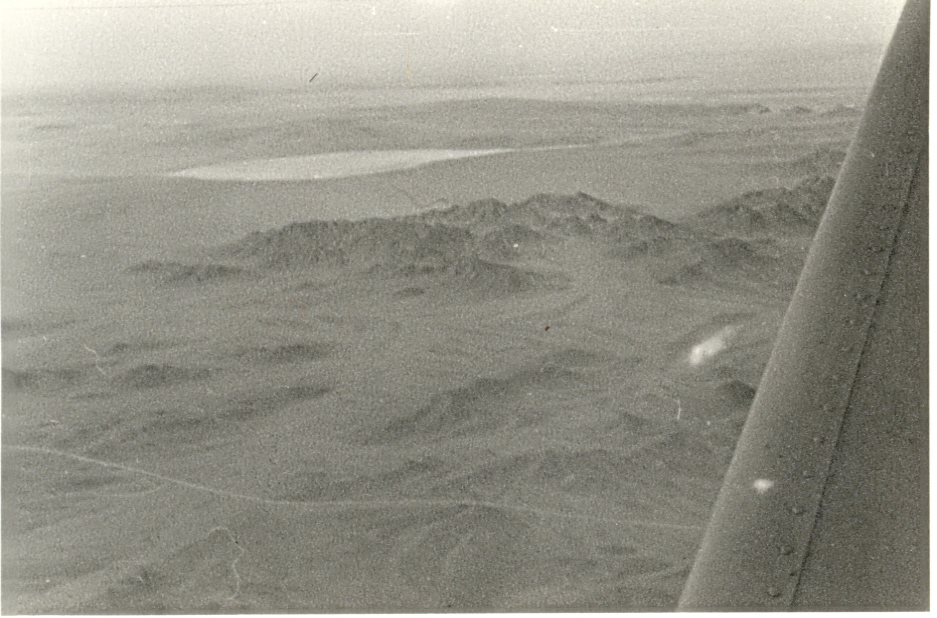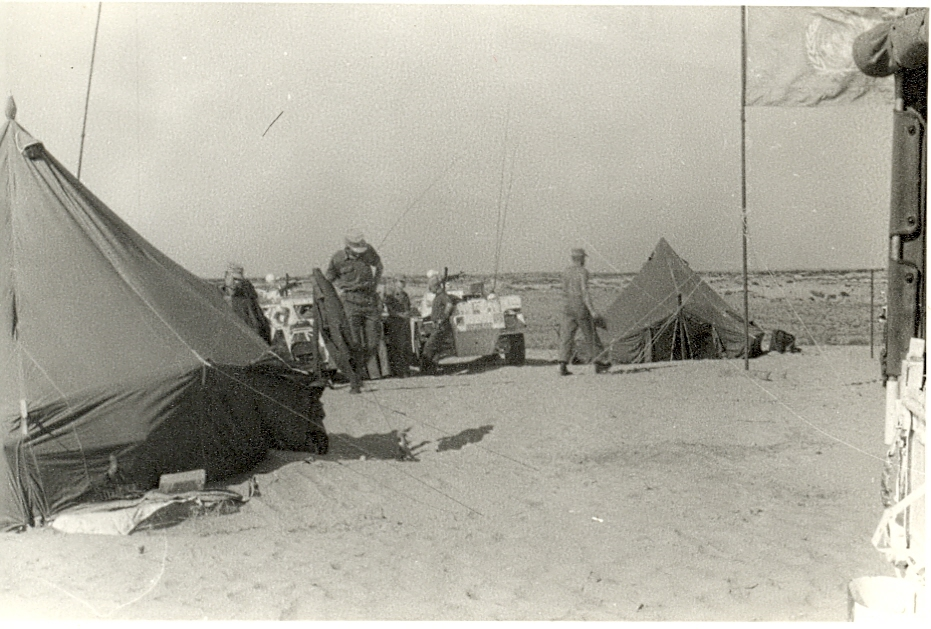
In an effort to pre-empt the actions of the Superpowers, Lester Pearson’s Peacekeeping initiative would be implemented. It would be in 1956 that an international contingent of soldiers would embark for Egypt. While they came from different countries, they would serve under the flag of the United Nations. They came to stand as a shield between the fighting Egyptians and Israelis. Canadians were among those sent, and the 8th Canadian Hussars were among the Canadians.
Camp Rafah, Egypt
A Reconnaissance Squadron of the Hussars would make landfall in Egypt in 1958. They set out from Canada and arrived in Camp Rafah early in February. While there, the REECE Squadron would be responsible for 35 miles of the ‘International Frontier.’ As such, they would be equipped with Ferret Scout Cars and a number of supplementary vehicles. As Peacekeepers, the Hussars would be lightly armed, their main armaments being sidearms and rifles.
To assist with logistics, Operational Posts would be constructed at the furthest extremes of the International Frontier. Winnipeg would be in the North and Toronto would be located in the South. Initially, these outposts were sparse; However, as the mission progressed, the Hussars were able to co-opt some base engineers to help improve the amenities at the outposts. Using the material at hand, these outposts would be equipped with look-out towers. From these posts, the Hussars maintained regular patrols of the Sinai Desert.

Peacekeeping was not without its tribulations. For example, several Hussars would come under enemy fire while out patrolling. As they were too far from the shooters to return counter-fire, the Hussars made a quick getaway by crossing to the Israeli side of the border. Once there, they were able to take temporary shelter with some Israelis, before being escorted back to the Egyptian side of the border. Outside of this incident, a more common danger to the Hussars were the presence of leftover mines from previous conflicts. For the Hussars, most of these mines were of no concern. The only exception being the deliberate planting of a mine on the Squadron’s patrol route. Fortunately, no Hussars were killed, although several were wounded. One of the final incidences in Egypt occurred when the Squadron captured Israelis who had conducted a raid against Bedouins in Egypt. The Israelis would be promptly released back to Israel, where they were punished for their actions.
